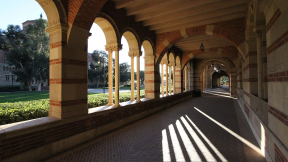What’s student loan disbursement?

Now that you’ve completed the Free Application for Federal Student Aid (FAFSA®), enrolled in college, accepted your student aid offer and signed a Master Promissory Note (if you were offered federal aid) or accepted any private student loans you were offered, you may be waiting to receive your financial aid funds to pay for college.
Here are some things to know about how financial aid disbursement works for student loans and when you can expect to receive these funds.
Student loan disbursement in a nutshell
Financial aid disbursement is the process in which your approved student aid – student loans, grants, and scholarships – is distributed to you directly or to your school account. To become eligible for federal financial aid, including federal student loans, students must first file the FAFSA®. Private student loans don’t require the FAFSA®, and individual lenders make decisions on applicants.
Student loan disbursement will vary depending on whether it’s a federal or private student loan. Federal student loan disbursement will typically take place after classes have started. Private student loan disbursement will vary depending on the lender.
Both types of student loans often get paid out in installments to cover a full academic year. For the most part, student loans get sent directly to schools to cover tuition, fees, and room and board. In cases where there are leftover funds in a student’s account, those funds may be sent directly to a student to cover other approved expenses, like textbooks.
When does student loan disbursement take place?
As covered above, students generally receive their federal student loans in two or more disbursements to cover a full academic year. Each school pays out this aid on a different schedule, which is partially determined by whether or not you’ve submitted all required paperwork on time and how your school divides its terms (semester, trimester, etc.).
Your school will likely notify you in writing about your financial aid disbursements. You’ll likely receive a notice detailing your total loan amounts and the upcoming distribution. Once your school releases the funds, you’ll receive a notice from your student loan servicer confirming the disbursement.
Federal student loans are generally disbursed directly to the school between 10 to 30 days after classes start. When it comes to private student loans, disbursement generally takes place at the beginning of the school term, but this may vary by lender and could depend on when you apply and are approved for a private student loan.
Are disbursements the same as refunds?
Disbursements occur when the school receives federal, state, or other funds on your behalf. Refunds occur when the funds received on your behalf exceed the amount owed for tuition and additional fees, and the remaining funds are returned to you.
For example, your school will receive your financial aid funds directly from the federal government and private lenders. When your school’s financial aid office disburses your aid, it will first pay for your tuition, fees, and room and board as a credit to your student account in most cases. If any funds remain, your school’s financial aid office may direct the funds to you through a check or a direct deposit, which is referred to as a refund.
Issues that could impact your student loan disbursement
Some issues could affect your student loan disbursements. If you get ahead of these issues, you can potentially prevent delays when it comes to receiving student loan funds for which you’re eligible or approved. Some of those potential issues could include:
- Filing the FAFSA® late or applying for private student loans close to the beginning of an academic term can impact when your loans are disbursed.
- If your FAFSA® requires verification and you delay supplying what’s needed for verification, that could impact the disbursement of your student loans.
- Mistakes that require your attention on either the FAFSA® or your private student loan application could delay your approval or disbursement.
- Not completing entrance counseling, a legally mandated requirement to receive most federal student loans, could create delays when it comes to student loan disbursements. Entrance counseling must be completed before federal student loans can be disbursed.
What to keep in mind for first-time student loan borrowers
If this is your first time taking out a federal student loan, the below may apply to you:
- If you’re a first-year undergraduate student and a first-time borrower, you may have to wait 30 days after the first day of your enrollment period before your loan money is disbursed. Check with your school’s policy to see whether this is the case.
- If you’re a first-time borrower of a federal Direct Subsidized Loan or a Direct Unsubsidized Loan, you’re legally mandated to complete entrance counseling before your school can distribute your funds.
- If you’re a graduate or professional student taking out a Direct PLUS Loan, you must complete entrance counseling before receiving your first loan disbursement. Parents taking out a Direct PLUS loan for their child’s education won’t need to complete entrance counseling.
Final thoughts
Student loan disbursement is one of the last steps of the financial aid process. Since your school is responsible for disbursing your federal financial aid (including student loans), if you have any questions or concerns, reach out to your school’s financial aid office so you can ensure you receive the funds you need to complete the school year ahead of you.



